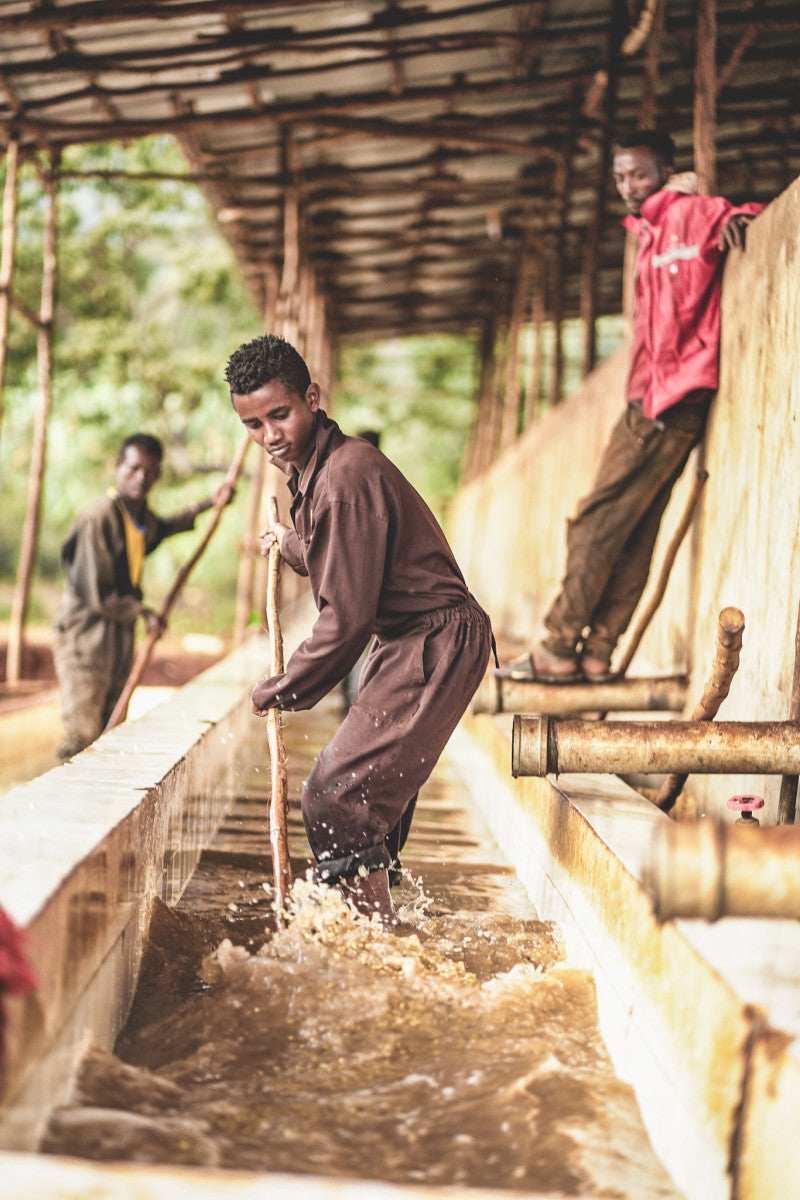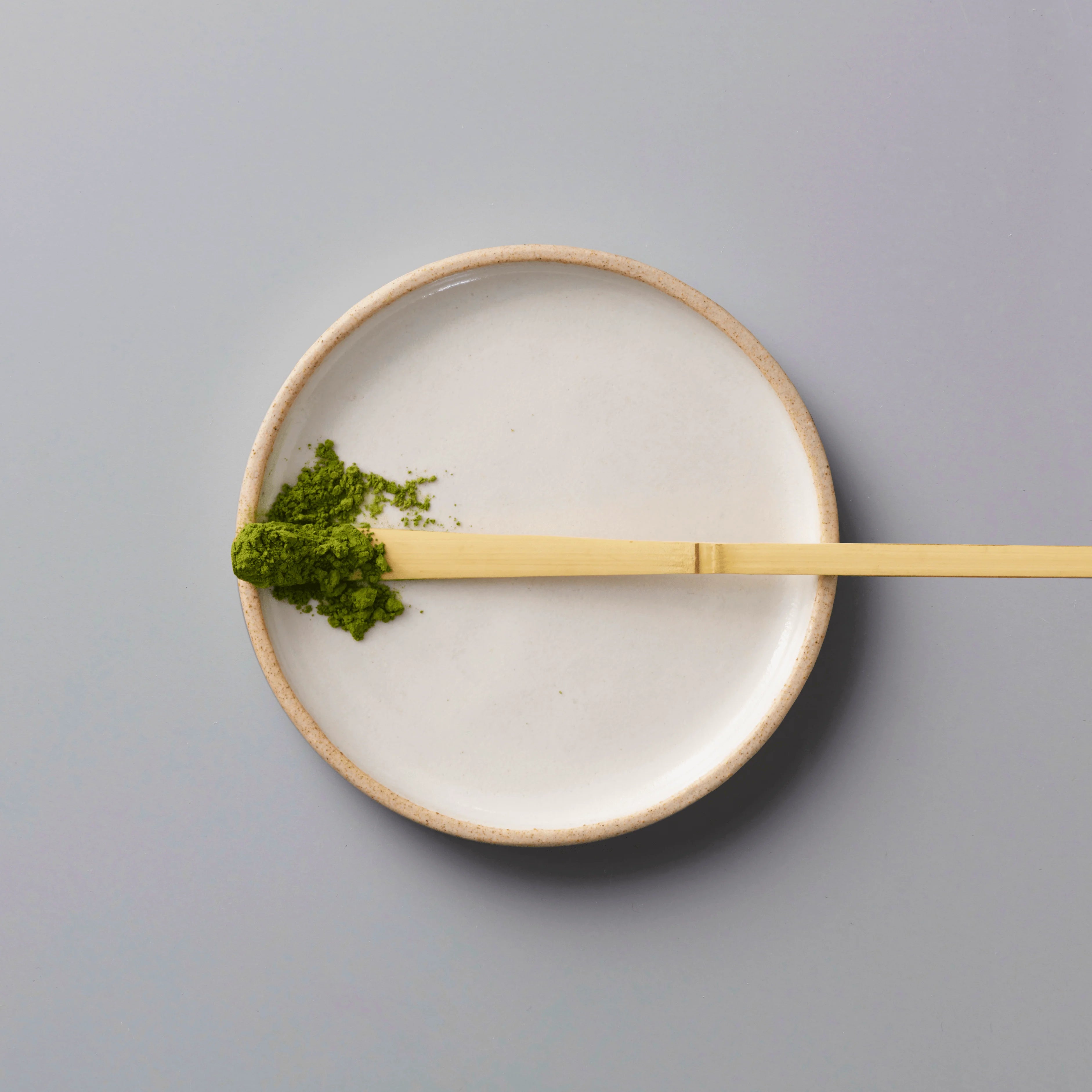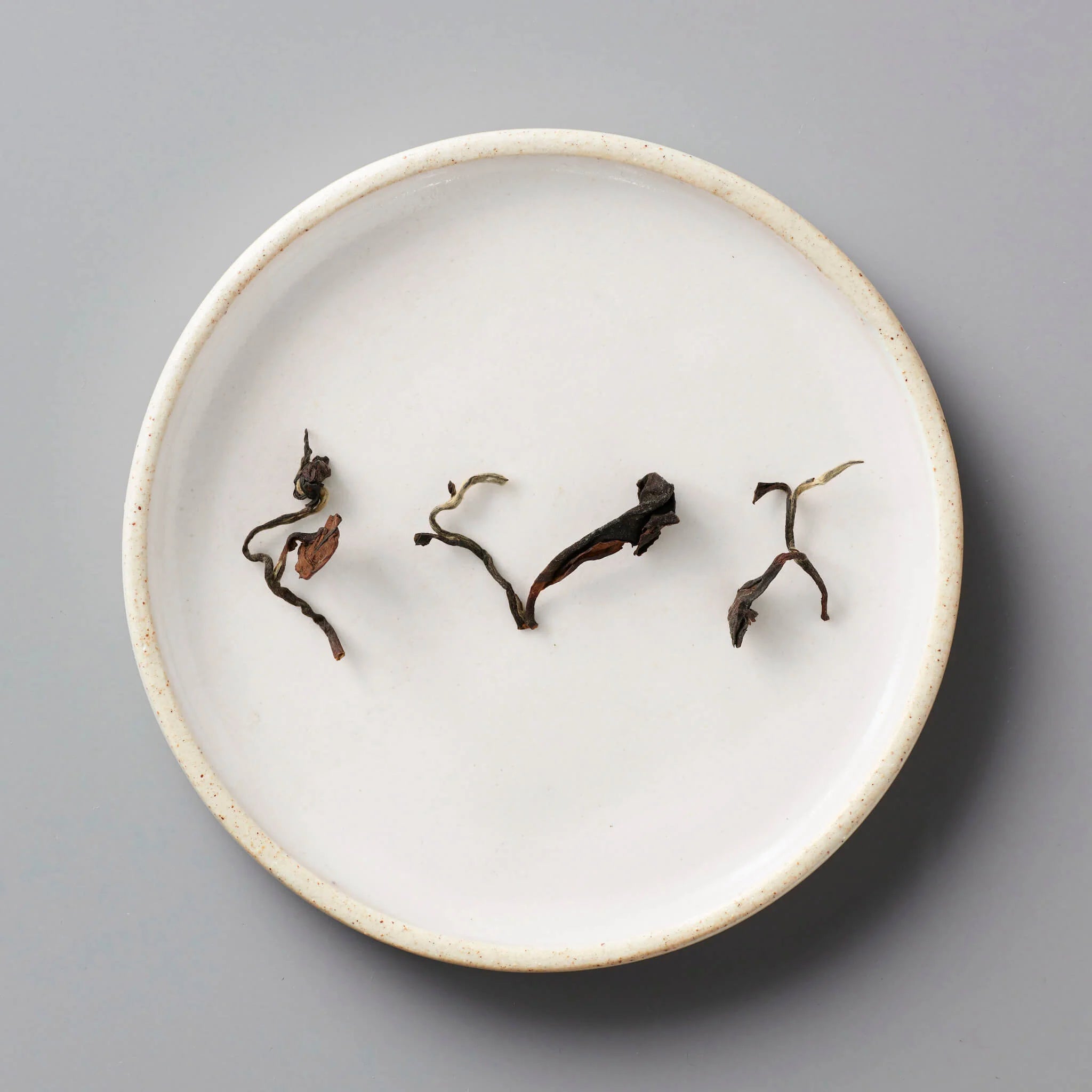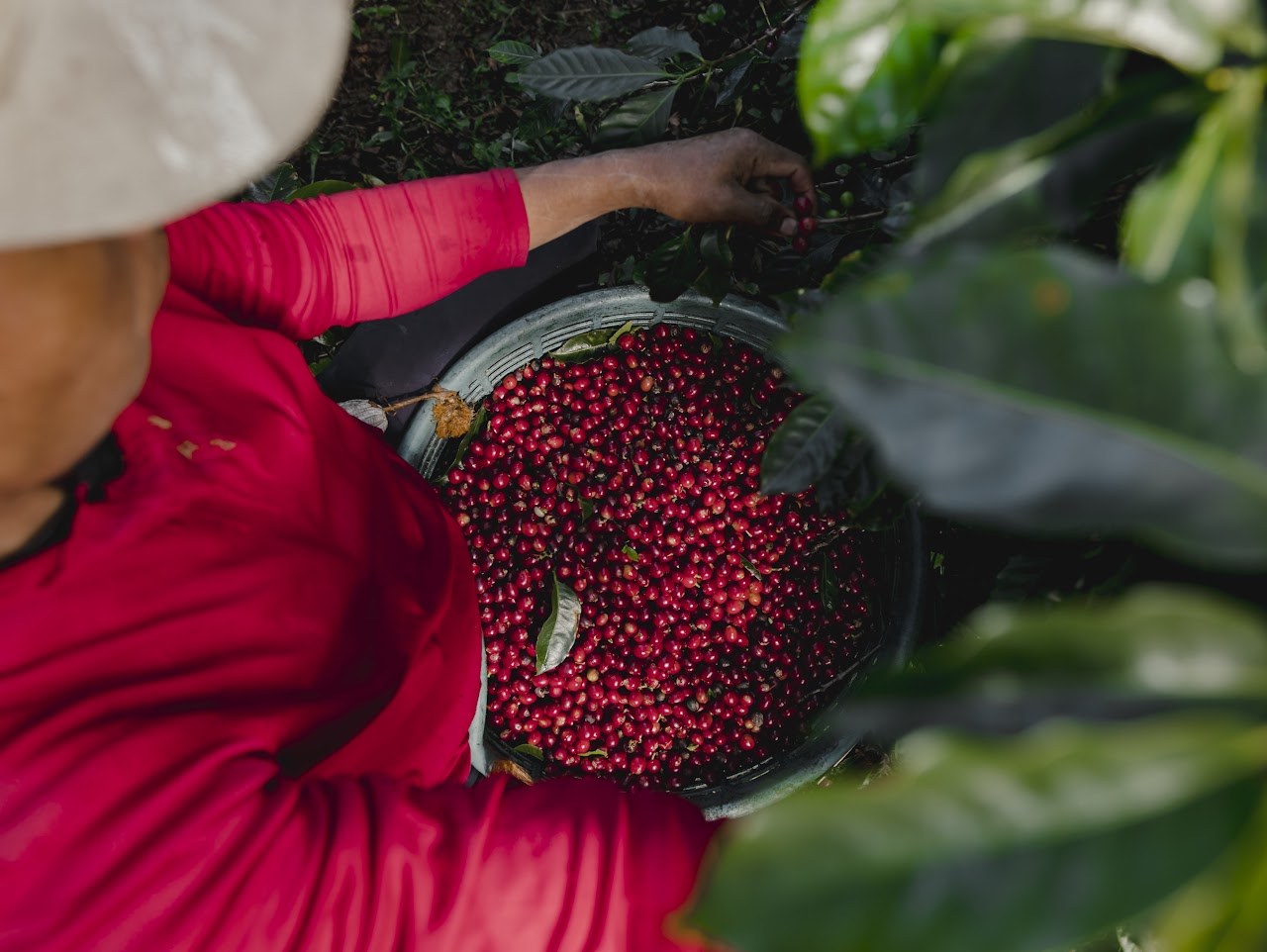3. Natural coffee: slow, intense, fruity
3.1. The process
Visit natural coffee (also known as the "dry process") preserves the whole cherry: the skin, pulp and mucilage remain around the kernel throughout the drying process. So we spread the whole cherries in the sun or on raised beds ("African beds") and turned regularly to avoid mold.
Drying can take from several days to several weeks, depending on the climate, sunshine, humidity level and density of the grains. This is patient work for the growers: they must ensure drying to avoid undesirable fermentation.
3.2. Sensory profile
In the cup, natural coffee is distinguished by :
- a more pronounced sweetness, often sugary, with notes of red fruit, tropical fruit, or even wine or jam.
- a fuller body, often fatter or more enveloping
- acidity that is sometimes less lively but rounder
- a complexity that evokes sensory exploration
As one enthusiast on Reddit points out:
"I find natural and honey-processed coffees to be sweeter, fruitier, and richer. Washed coffees tend toward herbal, floral, and savory."
3.3 Challenges and avenues
Natural treatment is attractive but risky. It requires a suitable climate (often dry and sunny), good batch control and constant monitoring. For the coffee producer, going natural requires a commitment to precision and a clear vision: it's not just about letting the coffee dry freely, but orchestrating intelligent drying.
4. Honey coffee: the path to harmony
4.1. The process
Visit coffee honey (often called the "honey process") lies somewhere between the two. The cherry is pulped (the skin is removed), but some or all of the mucilage is retained. Next, the kernels - still covered in sweet pulp - are spread out for processing. sun-dried. Depending on the amount of mucilage retained, we speak of "yellow", "red" or "black honey".
For example:
- Yellow honey: little remaining mucilage, faster drying
- Black honey: lots of mucilage, takes longer to dry, often gives a richer profile
Processing requires close monitoring: grains are vulnerable to humidity, poor aeration and mold. The sun drying must be controlled to avoid undesirable flavors.
4.2. Sensory profile
Honey coffee combines :
- a notable sweetness, but without falling into the extreme fruitiness of a natural
- moderate acidity, often rounder
- a denser body than washed, but more structured than natural
- a feeling of balance between clarity and intensity
As one source puts it: "The honey process sits somewhere between natural and washed. These coffees are known for providing a good level of fruitiness as well as medium ..." Hermanos Colombian coffee roaster
4.3 Challenges and avenues
For a coffee producer, choosing this treatment means opting for a balance between heritage and boldness, between purity and gentleness. At 94 Celcius, we see honey as a symbol of our own vision: theexploration without losing sight of theexcellence.










